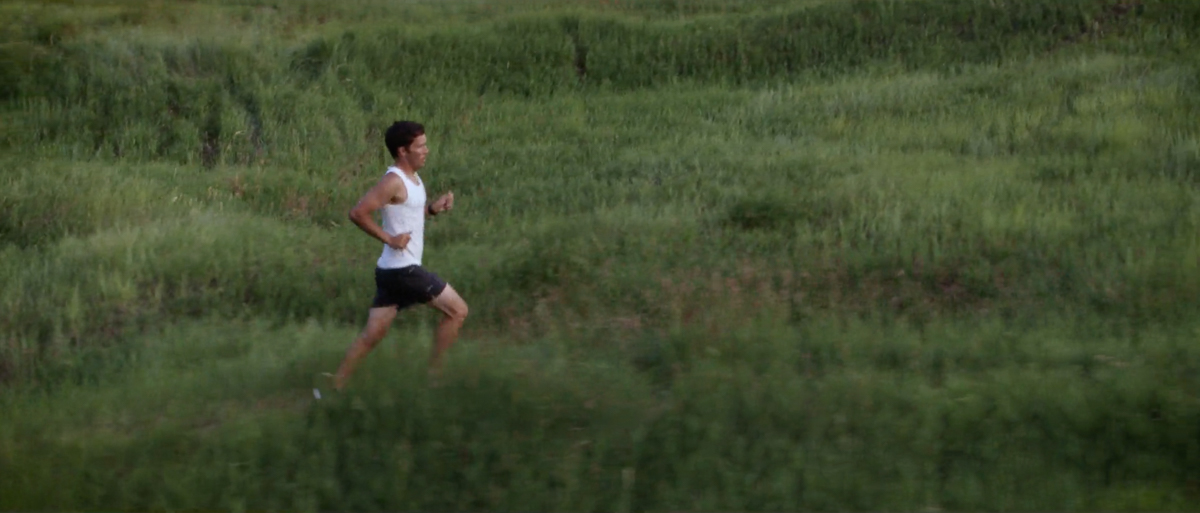

Off and Running
When Amy Nelson heard the idea from her biomechanics professor, she knew it was the kind of research topic she could really run with.
And others could run with it — or as a result of it — as well.
A senior in exercise science at Utah Valley University, Nelson is an avid runner — “I like to keep active” — logging about 12-15 miles per week. She and her professor and every other runner in the world know the importance of shoes in the running experience. A chance to gather data on several types of shoes, especially the newer highly cushioned thicker-soled shoes, sounded especially interesting.
“There are basically three different shoe types,” Nelson explains. “We are looking at a standard running shoe, the barefoot or minimalist running shoe, and then the highly cushioned running shoe with the big soles … All of a sudden, these max-cushion shoes come out and everyone is wanting to run in them and no one has ever looked at their data. There’s never been research done on how these new shoes affect your running gait and how they change the biomechanics of running. It’s a new trend and they are popular, and there’s not very much data on them, so that’s why it is kind of a big deal.”
Nelson said her undergraduate research team narrowed its focus to the Hoka brand of running shoe, a popular standard for the highly cushioned category. And while Nelson’s team’s research looked at pressure points or torque points in the knee and hip, the main focus of examination is the ankle of the runner while using these shoes.
“We have this really cool setup in our biomechanics lab,” Nelson says. “We have these motion-sensitive cameras, but they only pick up the reflective markers that we have on our runners. We have 16 cameras placed all across the room, and they are directed toward our treadmill, which is a huge treadmill. It’s a great tool to use, because it picks up the force, the force that is generated when running, whether level or uphill or downhill.
“The runners have reflective markers all over them, and the cameras pick them up, and we can see them on our computer screen. From there, we can see them run and the force plates and vectors that come into play. We then plug it into a visual 3-D program, and from there it will pull out these force moments and we can pick up the values in their gait. We take those numbers and compare them to different people, different shoe values, and come up with our data.”
Nelson is quick to point out that this level of research is unusual for an undergraduate class. The Advanced Biomechanics 4600 class has tackled other hands-on research topics, including how loaded backpacks affect students and examinations of pronating shoes.
“It’s been great to do this as an undergraduate. I’m doing graduate student work right now,” Nelson says. “The research I am doing, no one is offering. Other schools just don’t let their undergraduate students do research like this. I get to use top equipment, I get to learn and be hands-on. That’s why I’ve enjoyed it so much because I have been able to be fully engaged in this environment and I’ve come to really enjoy it. It’s cool.”
Before the class and her hands-on research, Nelson was leaning toward advancing into a graduate program as a physician’s assistant, but is now considering a master’s degree or even a doctorate in biomechanics. “This is my first real introduction into the biomechanics world. I have enjoyed it so much, so now I have two options to decide from.”
Nelson has noted, and her professors confirm, that besides the hands-on topics she is involved with, the equipment in the UVU exercise science department is top-level. Many graduate-level programs do not have the equipment Nelson and her classmates have been able to use as undergraduates.
Nelson says, “Our department at UVU has provided great opportunity for that, it’s been awesome. I love this program. It gives you the tools, the top equipment to use, and now you get to question things and learn about new things you’d never really thought about. We have great equipment here. It’s been really a great opportunity.
“Students are so engaged in this program. Who would have thought that my little project would have taken off like this?”
Taken off running, it would seem.

